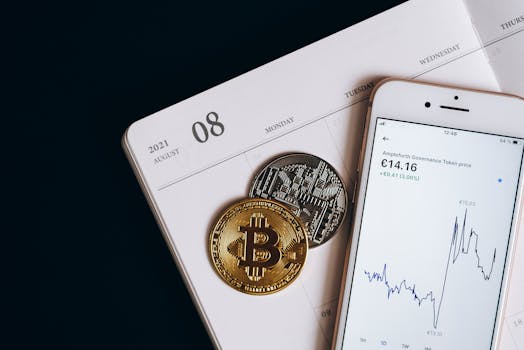The phrase “bitcoin price” often conjures images of dizzying charts, overnight millionaires, and speculative frenzies. It’s easy to get caught up in the daily fluctuations, viewing Bitcoin as little more than a volatile digital commodity. However, looking beyond the immediate ticker can reveal a much richer, more complex picture of what truly drives its value. In my experience, many newcomers are surprised to learn that Bitcoin’s price isn’t simply a matter of supply and demand in a vacuum. It’s a dynamic interplay of technology, adoption, global economics, and even human psychology.
What’s Really Moving the Market? Factors Beyond Basic Supply and Demand
While the fundamental economic principle of supply and demand certainly plays a role in the bitcoin price, it’s far from the only, or even the most significant, factor at play. Bitcoin’s fixed supply of 21 million coins does create a predictable scarcity, which is a foundational element. However, the demand side is where things get fascinatingly complicated. It’s influenced by a multitude of interconnected forces, each with the potential to send ripples through the market.
Consider the broader macroeconomic environment. When inflation concerns rise, or traditional assets like gold and stocks become less appealing due to instability, Bitcoin can emerge as an attractive alternative. This is often touted as “digital gold,” a store of value that can hedge against fiat currency devaluation. Conversely, in times of economic certainty and strong traditional market performance, investors might pull back from riskier assets like cryptocurrencies, impacting Bitcoin’s demand.
The Network Effect: How Adoption Fuels Bitcoin’s Ascent
One of the most powerful, yet often overlooked, drivers of Bitcoin’s value is the network effect. Think of it like this: the more people and businesses that use and accept Bitcoin, the more valuable it becomes. This isn’t just about speculation; it’s about utility. As more merchants integrate Bitcoin payments, and as more individuals hold it as a form of digital currency, its practical use cases expand. This growing adoption creates a positive feedback loop, attracting even more users and investors, further bolstering demand.
I’ve seen firsthand how stories of mainstream companies embracing Bitcoin, or major financial institutions offering crypto services, can ignite significant interest and subsequently influence the bitcoin price. These developments signal increasing maturity and legitimacy for the asset class, drawing in a wider audience who might have previously been hesitant. The ongoing development and scaling solutions for the Bitcoin network also contribute to its long-term viability and attractiveness.
Regulatory Winds: A Constant Shadow Over Crypto’s Horizon
It’s impossible to discuss the bitcoin price without addressing the significant impact of regulatory news. Governments worldwide are still grappling with how to classify and regulate cryptocurrencies. Announcements about potential bans, new tax laws, or the creation of clear regulatory frameworks can cause immediate and dramatic price shifts.
For instance, a country announcing a ban on Bitcoin trading or mining can lead to a sharp sell-off as investors fear contagion or restricted access. On the other hand, positive regulatory developments, such as the approval of a Bitcoin ETF in a major market, can signal growing institutional acceptance and confidence, often leading to price rallies. Keeping an eye on regulatory trends is crucial for anyone looking to understand the forces shaping Bitcoin’s trajectory. It’s a delicate dance between innovation and established financial oversight.
Market Sentiment and Media Narratives: The Psychological Component
Beyond concrete factors, human psychology plays an outsized role in the bitcoin price. Market sentiment—the general attitude of investors towards Bitcoin—is incredibly powerful. This sentiment can be driven by a variety of factors, including news cycles, social media trends, and the narratives that emerge around Bitcoin.
When positive news dominates, and the prevailing narrative is one of growth and innovation, investor confidence soars, often leading to bullish price action. Conversely, negative news, FUD (Fear, Uncertainty, and Doubt), or a shift in narrative towards Bitcoin being a speculative bubble can trigger panic selling and price declines. It’s interesting to note how a single tweet from a prominent figure or a widely shared news article can sometimes send shockwaves through the market, highlighting the emotional aspect of cryptocurrency investing.
Technological Advancements and Halving Events: Built-in Price Catalysts
Bitcoin’s underlying technology and its programmed scarcity mechanisms also contribute to its price dynamics. The most well-known of these is the “halving,” an event that occurs roughly every four years and cuts the reward for mining new Bitcoin in half. This is designed to slow down the rate at which new Bitcoins are introduced into circulation, thereby increasing scarcity and theoretically putting upward pressure on the price over time, assuming demand remains constant or grows.
Past halving events have often been followed by significant bull runs, though it’s important to remember that correlation doesn’t equal causation. Many other factors are usually at play. Nonetheless, these predictable events are baked into the Bitcoin protocol and are closely watched by investors as potential catalysts. Furthermore, ongoing technological upgrades and protocol improvements can enhance Bitcoin’s security, scalability, and functionality, which can positively influence its long-term value proposition and, consequently, its price. Understanding the implications of these technical milestones is key to grasping the evolving landscape.
Wrapping Up: A Holistic View for Navigating Bitcoin’s Currents
The bitcoin price is a complex beast, influenced by a symphony of economic forces, technological innovations, regulatory shifts, and human sentiment. Rather than chasing the daily headlines, a deeper understanding of these interconnected factors provides a more robust framework for assessing its potential. For those looking to engage with Bitcoin, whether as an investor or a user, the key takeaway is to cultivate a holistic perspective. Don’t just look at the chart; understand the underlying currents shaping its movement. My advice? Stay informed, approach with a long-term mindset, and never invest more than you can afford to lose.


